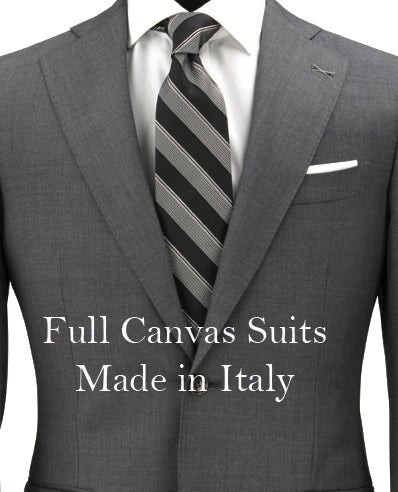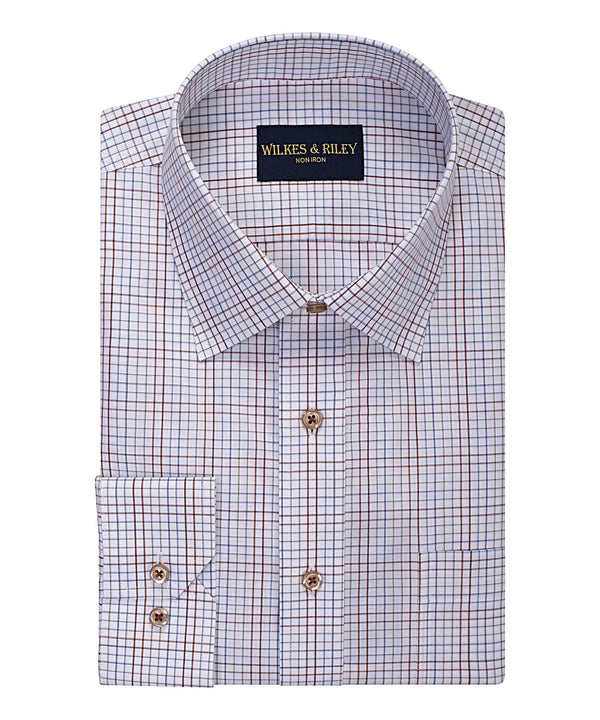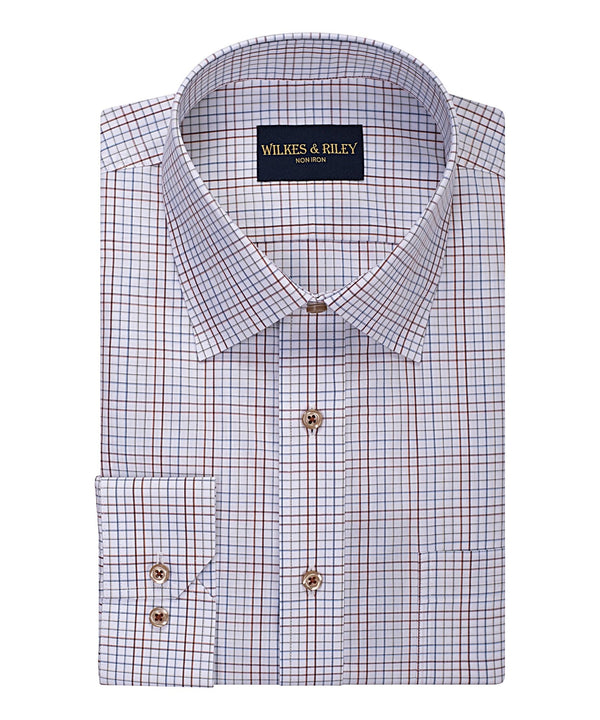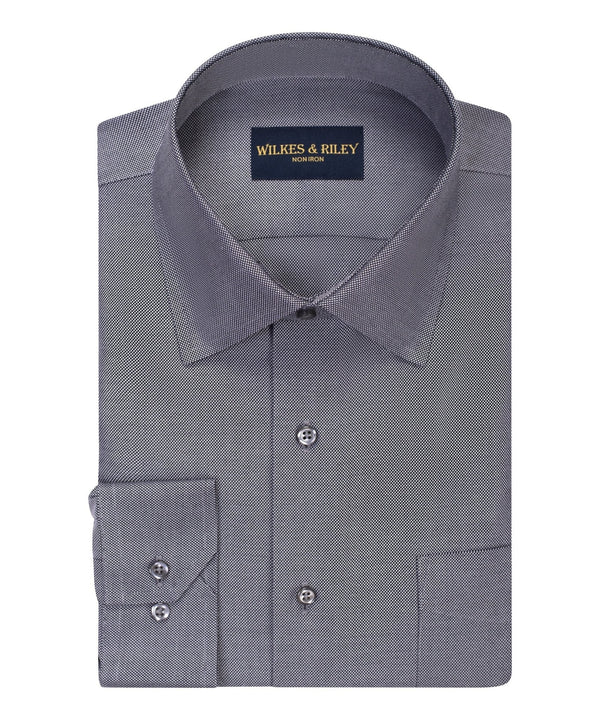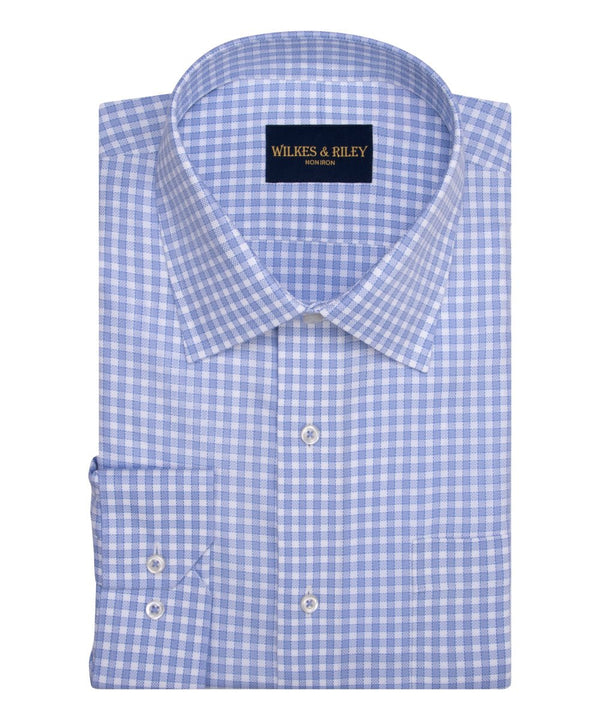If you're in the market to purchase a suit and you want to make sure you get your money's worth, please keep reading. We cover the all the basics: fit, construction, fabric quality, country of origin and price. A suit is an expensive investment, so before you spend your hard-earned money, know what you're buying. You’ll be glad you did.
Fit
Jackets
- Shoulder – the seam should rest naturally on your shoulders. The only part of a suit that shouldn’t be altered is the shoulder because the cost to do so would be far too expensive. It would be better to select a different suit.
- Collar – the jacket collar should hug your shirt collar and not gap. The jacket collar should go about halfway up your shirt collar. Between ½” to ¾” of your shirt collar should be visible.
- Body – with your top or center button fastened, you should be able to slide a flat hand under your lapel. Additionally, the fastened button should be between three and four inches above the navel. If the jacket feels like it will tear while hugging someone, then it's too tight. Your suit jacket should completely cover your behind, any further and it's too long.
- Shape –the sides of the suit should not go straight down. There should be a bit of taper that slims at your waist and sweeps out slowly to your hips.
- Length – with your arms at your side, curl up your fingers; the jacket should rest in your hand.
- Sleeve length – jacket sleeves should fall where the base of your thumb meets your wrist with ½” of the shirt cuff visible.
Trousers
- Suit trousers should rest on your waist not your hips with a finger’s worth of room at the waistband. Proper fitting trousers should not require the support of a belt.
- Pleat or plain-front trousers are matters of personal preference. Fashion trends come and go and while we are in a plain front trend, pleated trousers do serve a purpose.
- Cuffs or no cuffs are also based on personal preference. Current trends aside, cuffs do help with the drape of the pant.
- Another personal preference would be break. This has to do with the amount of fold at the shin. It all depends on height. If you are shorter, you may want to choose no break to ¼ break whereas, someone taller should consider a ½ to full break.
Construction
There are three construction methods: fused, half canvas and full canvas.
- Fused jackets are the easiest and cheapest method to produce. This is achieved by applying an interfacing (glue) that is applied to the front panel and lapel. Inherently, the fused jacket will have a stiffness in the chest. Although rare, excessive dry-cleaning can lead to bubbling where the interlining separates from the wool. Over time you can expect a loss of durability and flexibility. Fused suits are good if your main motivation is to have an inexpensive suit that will not be worn often.
- Half canvas jackets provide form and shape by applying canvas to the top half of the jacket which includes the lapel and chest. The lower section of the front panels are fused. Overtime, the heat of the wearer's body will mold the canvas to the shape of the body. Half canvas suits are considered mid range quality and make a great starter suit.
- Full canvas jackets are the pinnacle of quality with the most time consuming method of manufacturing. The amount of detailed stitch work to sew the canvas to the shell is extensive and requires a great amount of skill. The outcome provides more flexibility, durability and will, over time, mold to the shape of your body providing the best possible fit. Overall, a fully canvassed suit should be an investment piece that you can wear for years.
Fabric Quality
- Yarn Count – suit fabric qualities are generally identified by their "super" number. The higher the super number, the finer the fabric. These super numbers allow the consumer to quickly recognize the fabric quality based on the super number specified. One may be tempted to reach for suits made of super 180's or higher. While they may appear beautiful, they tend to be more fragile. For daily use, you should select a range from 110's to 130's and for special occasions, 150's to 180's.
Country of Origin
- Suits are manufactured all over the world, however, it is widely recognized that suits produced in England, Italy and the United States are of the highest quality. While this only covers the component assembly, the origin of the fabric remains a mystery. Some retailers will sew the mill label onto the jacket providing complete transparency. If the details for the fabric mill and quality are not attached to the garment,you should request this information before purchasing your suit.
Price
- There are four main components that impact the cost of a suit; three of the four are listed above – construction method, fabric quality and country of origin. The fourth, markup, has nothing to do with the cost of manufacturing; it has to do with the added cost the retailer puts on top to cover overhead and profit margin. Overhead is the expense associated with running the business such as the cost to operate each of their physical store locations, as well as their marketing expenses such as advertising. So every print ad and every television commercial you see promoting their brand is eventually paid for by their customers.
Wilkes & Riley Suits
Wilkes & Riley suits are full canvas, constructed in Italy using premium Italian fabrics. All of our suits are manufactured with full garment pick-stitching and functional buttonholes also known as "working cuffs." We offer two fits: classic and slim. The patterns have been meticulously drawn by hand by our master tailor who has been crafting men's suits for over 50 years. We have taken the utmost care in creating these garments. We would appreciate it if you would revisit our website after making your purchase and share your experience with us.


